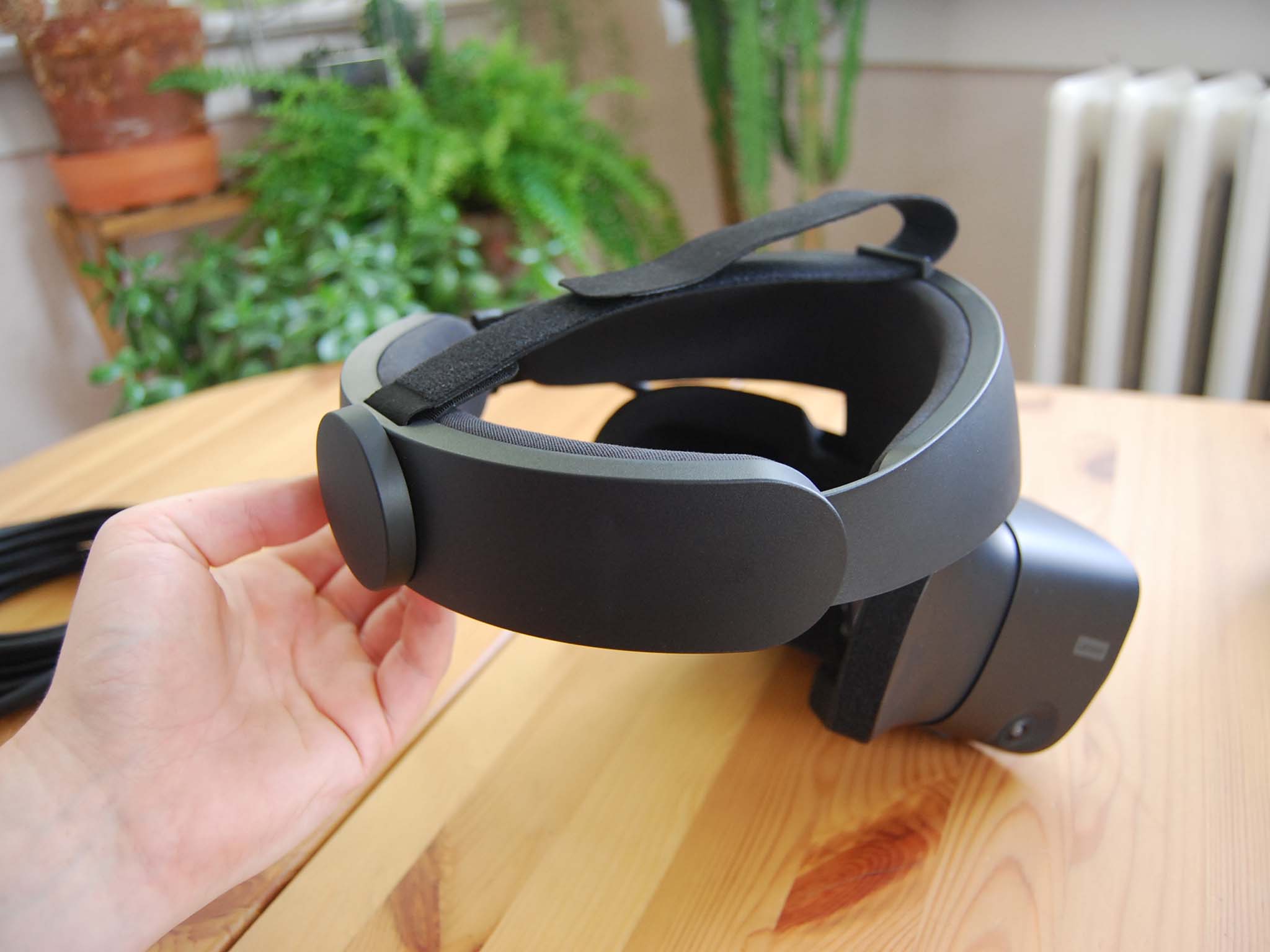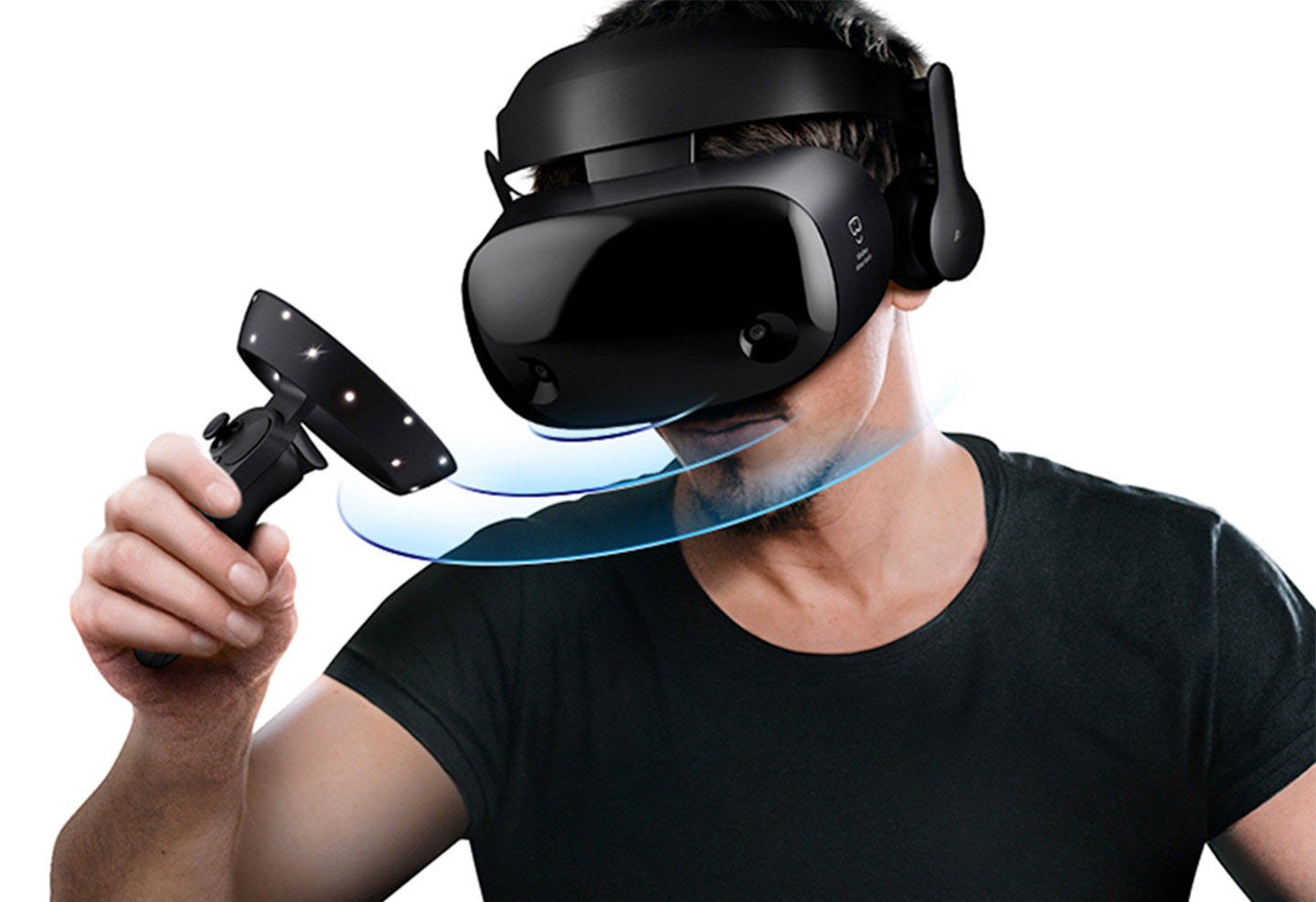Samsung HMD Odyssey+ vs. Oculus Rift S: Which headset should you buy?


Premium WMR
The Samsung HMD Odyssey+ is a high-end Windows Mixed Reality (WMR) headset with premium specs. Its AMOLED display offers excellent contrast as well as high field-of-view (FOV), 90Hz refresh rate, and manual interpupillary distance (IPD) adjustments. However, its motion controllers are inferior to Oculus Touch, and you don't get access to Oculus exclusive titles.
Pros
- Higher 90Hz refresh rate
- Higher 110-degree FOV
- Higher resolution display
- Manual IPD adjustments
- Easy setup
Cons
- Motion controllers not as good
- Becoming harder/pricier to find

Oculus PC VR
The Oculus Rift S is the latest PC VR from Oculus, bringing inside-out tracking and updated Touch controllers. Its LCD display is a bit lower resolution than the Odyssey+, as is the refresh rate and FOV. However, it still puts out a good VR experience with solid tracking thanks to five built-in sensors. You also get native access to Oculus exclusive titles, of which there are plenty.
Pros
- Access to Oculus exclusives
- Five built-in tracking sensors
- Oculus Touch controllers are great
- Lenses offer great clarity
Cons
- Lower resolution, FOV, and refresh rate
- No manual IPD adjustment
- Audio not as good
Samsung HMD Odyssey+ vs. Oculus Rift S tech specs
| Header Cell - Column 0 | Samsung HMD Odyssey+ | Oculus Rift S |
|---|---|---|
| Display | Dual 3.5-inch AMOLED | Single LCD |
| Display resolution | 2880x1600 (combined) 1440x1600 (per eye) | 2560x1440 (combined) 1280x1440 (per eye) |
| PPI | 616 | 538 |
| Refresh rate | 90Hz | 80Hz |
| Field of view | 110 degrees | 90 degrees |
| IPD | Manual | Software |
| Audio | Built-in AKG headphones | Integrated headband |
| Tracking | Inside-out Two sensors | Inside-out Five sensors |
| Connections | HDMI USB-A | DisplayPort USB-A |
| Weight | 1.31 pounds (594g) | 1.24 pounds (561g) |
Display
One of the biggest draws to the Samsung HMD Odyssey+ is the stellar set of displays. Compared to the Rift S, you get a higher resolution, more pixels per inch (PPI), and almost no SDE for a clear image. The Rift S isn't a slouch, delivering a slightly lower 90-degree FOV and a maximum 80Hz refresh rate. That's lower than the 110-degree FOV and 90Hz refresh rate in the Odyssey+, but still relatively good specs.
If you're interested in a VR headset with the best picture possible, the Odyssey+ no doubt makes more sense than the Rift S. Oculus improved the display in the Rift S quite a bit over the Rift, but it just doesn't quite match up in raw specs. The AMOLED displays in the Samsung headset are going to give you way better contrast and color. However, the Rift S lenses do offer more clarity when not looking directly at the display.
There's also the matter of the Rift S not having the ability to make physical IPD adjustments. If the space between your eyes doesn't fit a common measurement that can be accounted for with software, there's a higher chance you'll experience discomfort during extended play sessions. The Odyssey+, on the other hand, allows for physical IPD adjustments, thus fitting more people more comfortably.
Design and features
The Oculus Rift S has a halo headband that holds the display in place, with an adjustable dial on the back. The display portion hangs more down over your face than it is strapped in, allowing for a more comfortable feel. Built into the side straps are headphones with spatial audio. They allow a user to experience some pretty impressive audio while not missing out on what's going on around them. The Odyssey+, with a similar halo band with a dial on the back, uses AKG headphones that hang down off the sides. Audio quality is excellent and a lot closer to what you'd get with a separator pair of headphones.
Both headsets offer sufficient room for wearing prescription frames, and both generally remain comfortable even when worn for an hour or two. The Odyssey+ is slightly more massive than the Rift S, but not enough that it makes a significant difference.
The Rift S made the jump to using built-in sensors instead of external sensors. Five cameras on the HMD make up Oculus Insight, and it works by scanning the room and combining the data it finds with other internal sensors. The Odyssey+ has a similar inside-out tracking system with no need for external sensors, though the HMD has just two cameras. Tracking isn't quite as good, especially when the controllers are moved behind or above your head, but still good enough that you can enjoy frenetic games with plenty of movement.
VR experience
Oculus has grown its audience thanks to a generous selection of exclusive Rift S titles in the Oculus Store, as well as access to the SteamVR library. If you want to play games (without third-party workarounds) like Robo Recall, Stormland, Lone Echo, and Echo Combat, you'll want to go with the Rift S. The Odyssey+, with titles in the Microsoft Store and with SteamVR integration, does have its fair share of excellent games, but there just isn't quite the same selection of native AAA content.
All the latest news, reviews, and guides for Windows and Xbox diehards.
When it comes to setup, the Odyssey+ and Rift S are both quite easy. All you have to do is install some software, plug in the headset, and connect the included motion controllers. Tracking is handled by cameras in the headset, so you don't need to configure any extra hardware. Note that the Odyssey+ uses HDMI and USB-A to connect, while the Rift S uses DisplayPort and USB-A. Neither HMD has a wireless solution, and you will be tethered to a PC while in use. If you are looking for a wireless VR headset, something like the Oculus Quest is a stellar option. And you can always extend your Rift S cable on the cheap.
Motion controllers are a big part of the overall VR experience, and there the Rift S is a clear winner. Oculus Touch controllers are more comfortable, they track better, and they have capacitive touch for more natural input. The motion controllers that come with the Odyssey+ are a bit different than the standard WMR controllers, but they just don't compare to what Oculus has cooked up.
When it comes to PC hardware for running VR, the better the system is, the better your experience will be. Individual games will have their own recommended hardware to run optimally, but both VR headsets also have some listed specs. Oculus recommends a PC with NVIDIA GTX 1060 or AMD Radeon R9 480 graphics card (GPU) as recommended specs, as well as a 4th Gen Intel Core i5 or AMD Ryzen 5 1500X processor (CPU) and 8GB of RAM.
WMR has two performance tiers. If you want the Ultra performance tier with 90Hz refresh rate and passthrough cameras, you'll want at least a 4th Gen Intel Core i5-4590 or AMD Ryzen 5 1400 CPU, 8GB of RAM, and an NVIDIA GTX 1060 or AMD Radeon RX 470/570 GPU. For the base WMR tier, you're looking at a 7th Gen Intel Core i5-7200U (for its integrated graphics) or AMD Ryzen 5 1400 CPU, 8GB of RAM, and an NVIDIA MX150, NVIDIA GTX 1050, NVIDIA 965M, AMD Radeon RX 460/560 dedicated GPU. It will also run on integrated Intel HD Graphics 620 or better. As mentioned, these are just jumping-off points, and better hardware will only improve your VR experience.
Samsung's Odyssey+ is the best way to get into Windows Mixed Reality
The Samsung HMD Odyssey+ is a great way to get started in WMR. It's a high-quality headset with beautiful displays, comfortable build, and great audio. You might not have native access to a bunch of Oculus exclusives, and the motion controllers aren't as good, but otherwise, this is an excellent pick for just about anyone.
The Oculus Rift S is still a solid VR system
The Rift S might not quite match up to the Odyssey+ in raw specs, audio, and IPD adjustments, but it's still a great VR system. Oculus Touch controllers are stellar and far more natural feeling than the WMR controllers. And native access to all Oculus exclusives is undoubtedly a bonus.

Cale Hunt brings to Windows Central more than nine years of experience writing about laptops, PCs, accessories, games, and beyond. If it runs Windows or in some way complements the hardware, there’s a good chance he knows about it, has written about it, or is already busy testing it.



